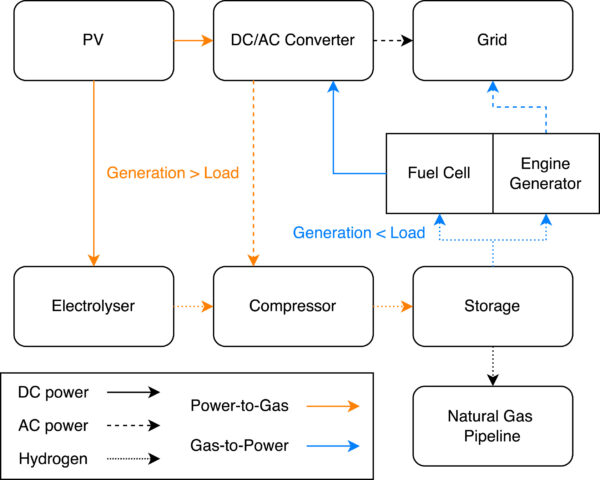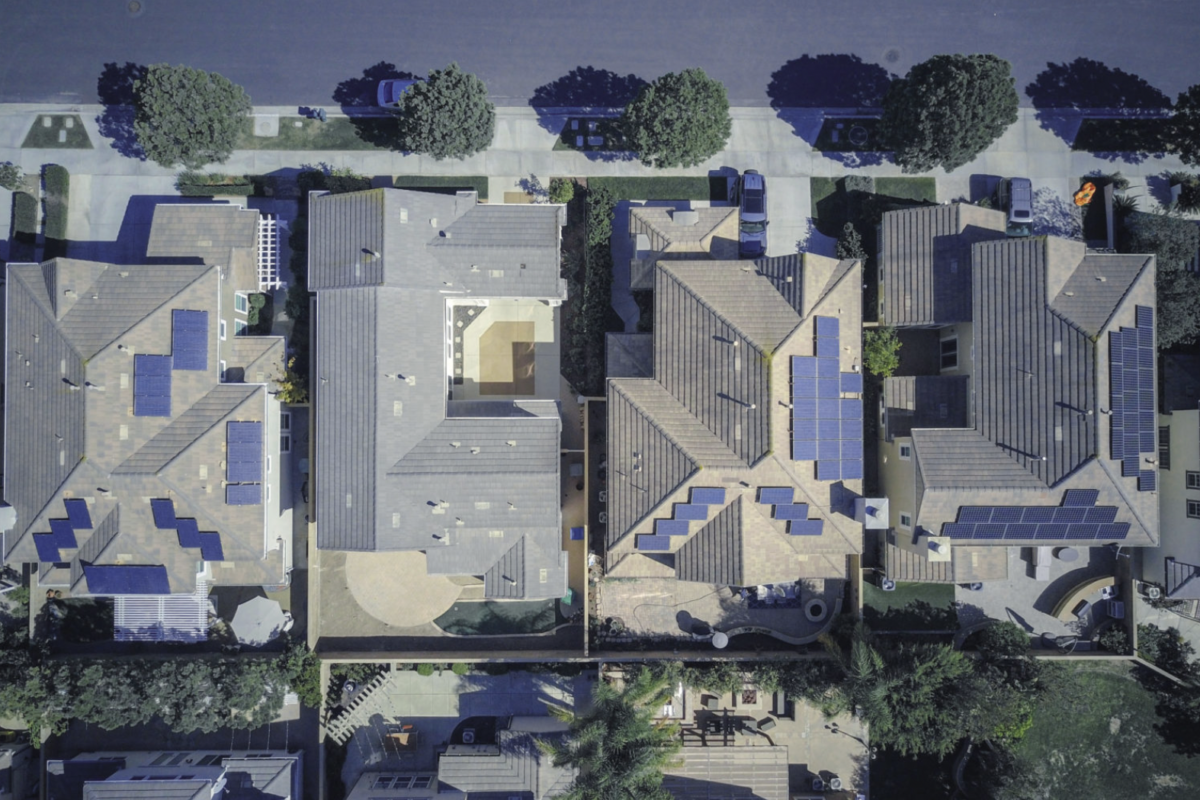A group of scientists at the University of New South Wales in Australia has investigated the technical and economic feasibility of relying on hydrogen-fueled reciprocating engines for using PV-powered hydrogen in both gas-to-power and power-to-gas operations.
Reciprocating engines are engines that use one or more pistons to convert pressure into rotational motion. They convert the heat and pressure released during the combustion of a fuel mixed with air into mechanical energy.
The proposed solution was conceived to reduce the levelized cost of energy (LCOE) of hydrogen generation powered by large-scale PV. “The cost of reciprocating engine is not expected to decline moving forward as it is a relatively mature technology,” the research's lead author, Shaun Chan, told pv magazine. “The viability of the proposed configuration will depend on electrolyzer costs.”
In the study “Evaluating the techno-economic feasibility of hydrogen-fuelled reciprocating engines for renewable base-load power generation,” published in Energy Conversion and Management, the research group said the system includes a 180 MW large scale PV facility, a 93 MW proton exchange membrane (PEM) electrolyzer, a 4 MW compressor, and a 29-ton pressurized hydrogen storage unit for power-to-gas conversion, as well as a 10 MW hydrogen-fuelled reciprocating generator based on hydrogen-diesel dual direct-injection (H2DDI) technology for gas-to-power operation.
The power-to-gas storage unit operates with the surplus power provided by the solar farm, while the gas-to-power unit is used to convert the stored hydrogen into electricity when there is limited availability of electricity in the market. “The produced hydrogen can either be sold to the market and blended into the existing natural gas pipeline or stored for later use when power generation from the PV is insufficient, such as during night time or adverse weather conditions,” the scientists explained.

Image: UNSW, Energy Conversion and Management, Creative Commons License CC BY 4.0
The researchers specified that diesel is used as both an ignition source and an additional energy source, with the H2DDI technology being able to gauge variable proportions of hydrogen and diesel to produce power based on available fuel reserves. They also explained that a rise in the hydrogen energy fraction was found to result in a higher LCOE.
The techno-economic analysis showed that the proposed system configuration has the potential to achieve an LCOE of $335.52/MWh and minimal CO2 emissions of 78 kg/MWh. For comparison, the current average LCOE of New South Wales is half of this value. The system was also found to enhance sustained grid supply by increasing diesel consumption without a substantial increase in the LCOE.
Despite these initial findings reveal the proposed technology has a long way to go before reaching commercial maturity, the research team is convinced that the adaptability of the system will make it compete with alternative technological approaches.
With this in mind, the academics conducted a series of technical and economic evaluations considering prospected energy prices, possible policy improvements, technology advancements, and grid enhancements. Through this analysis, they found that the system may achieve optimized LCOE values of $138.76/MWh and $148.91/MWh for the engine and PEM fuel cell systems, respectively.
“Sensitivity analysis revealed that the LCOE was most sensitive to the discount rate, with a 2% variation leading to a 27%–30% change,” they further explained. “Conversely, 5% fluctuations in diesel fuel, hydrogen wholesale, and large-scale generation certificate (LGC) trade prices had a minimal impact due to the system’s optimized and unaltered size within the tested ranges.”
They also specified that the described landscape may be significantly altered by breakthroughs in renewable energy and energy storage technologies in the future. “The economic feasibility of the technology can be significantly influenced by future government policies and regulations related to carbon pricing mechanisms, renewable energy targets, and support programs for clean technologies,” they added.
This content is protected by copyright and may not be reused. If you want to cooperate with us and would like to reuse some of our content, please contact: editors@pv-magazine.com.




By submitting this form you agree to pv magazine using your data for the purposes of publishing your comment.
Your personal data will only be disclosed or otherwise transmitted to third parties for the purposes of spam filtering or if this is necessary for technical maintenance of the website. Any other transfer to third parties will not take place unless this is justified on the basis of applicable data protection regulations or if pv magazine is legally obliged to do so.
You may revoke this consent at any time with effect for the future, in which case your personal data will be deleted immediately. Otherwise, your data will be deleted if pv magazine has processed your request or the purpose of data storage is fulfilled.
Further information on data privacy can be found in our Data Protection Policy.